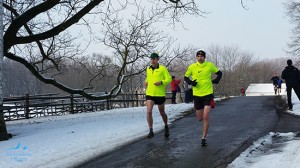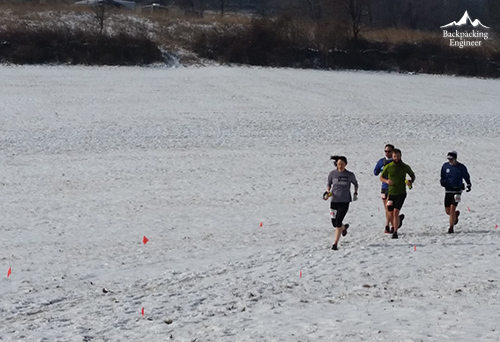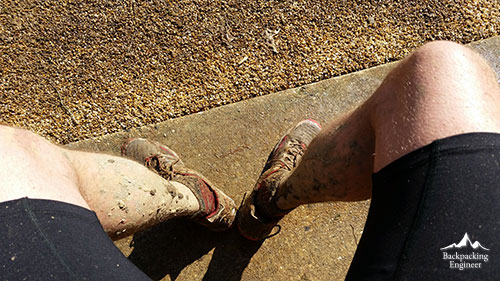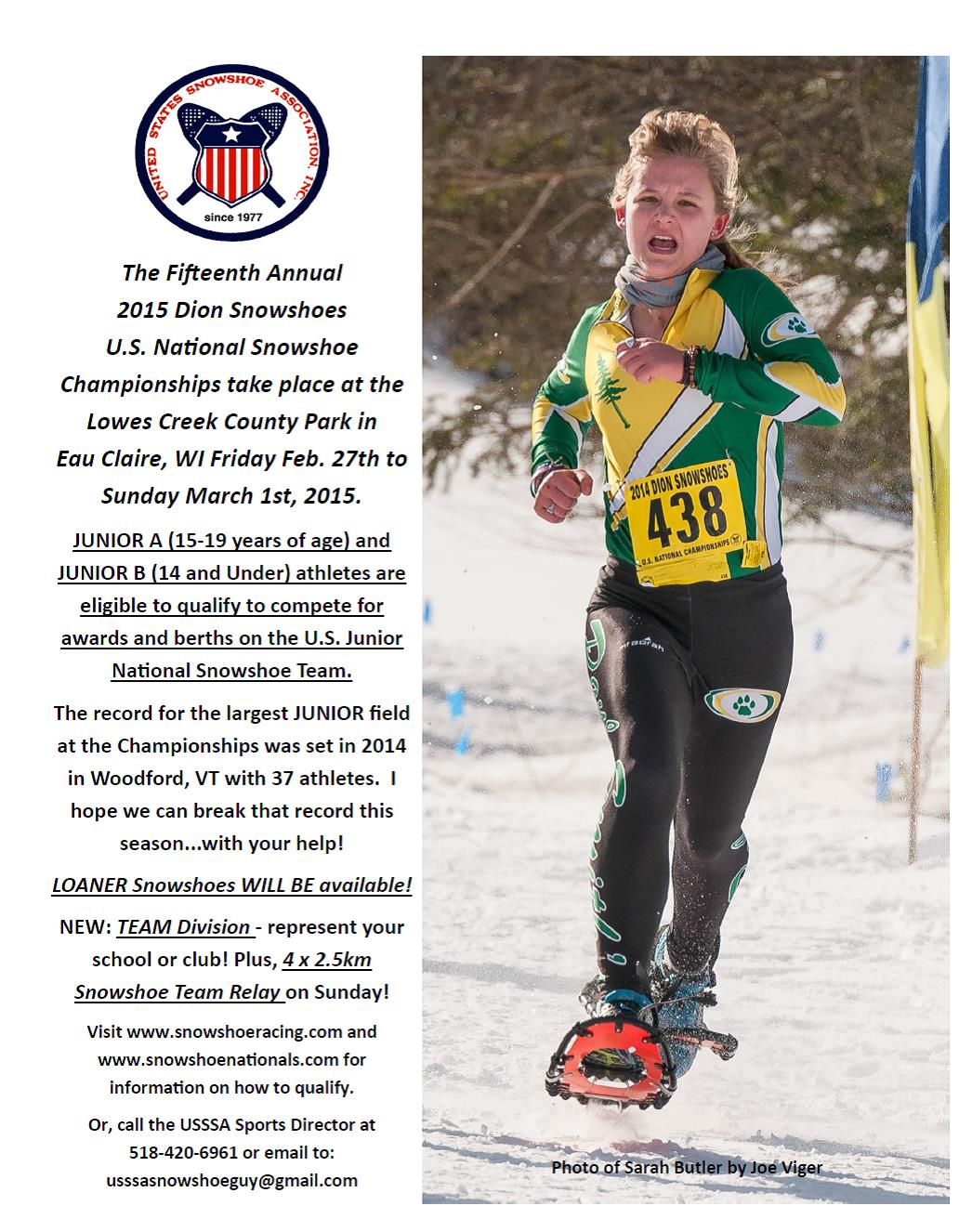This year, Endurance Racing Magazine wants to give kudos to those athletes and their supporters, who have provided updates on the great successes and lessons learned about Badwater. This article focuses on Grant Maughan.
Grant Maughan, who I featured in ERM a few months ago, is a prolific athlete, but his Badwater race didn’t go as planned. He went out fast but continued on until he just couldn’t. But his words are ones to remember:
“When someone asked me why I kept going at Badwater when I was half dead, I said “because half dead is also half alive”…it’s all about that glass…”
Grant’s statement is the type of thing you will hear from all endurance athletes. We go on because that’s really all there is to do. Below is most of Grant’s race write up, with the full write up posted on his blog, Dingofish Express.
By Grant Maughan
Endurance Athlete
The 2015 Badwater 135 is over for me. I am a wreck of a man but with only myself to blame.
I can’t believe I started let alone finished after my crazy existence the last couple of months which has run me down and made me feel a little older…though I have trouble admitting it..
At the start line I felt ok but knew I had been burning the candle at both ends for some time. Whatever made me jump off the line to clock 7-something minute miles into the desert I don’t know, but I was about to pay a heavy rookie price for my foolishness.
 At mile 5 I felt flat and listless. At mile 10 I only wanted to lie in the dirt and go to sleep. At mile 15 I was so dehydrated that my throat and mouth were like concrete…at mile 20, thinking I might faint, I crawled into the crew van and thought my race was over….the crew laid me out, rehydrated me and sent me back out. My stomach was distended as it was having trouble processing needed fluids and calories because all my blood was being sent to the extremities to cool me in the 106F heat in the middle of the night and your stomach needs blood to operate properly. This was the ghastly start to things I had never experienced before in a race and would set me up for the most uncomfortable 135 miles I could imagine. I threw up and my stomach went south and stayed there until the end until I could stop putting so much stress on all my systems. I had a splitting head ache from the dehydration that came and went and I felt listless all race.
At mile 5 I felt flat and listless. At mile 10 I only wanted to lie in the dirt and go to sleep. At mile 15 I was so dehydrated that my throat and mouth were like concrete…at mile 20, thinking I might faint, I crawled into the crew van and thought my race was over….the crew laid me out, rehydrated me and sent me back out. My stomach was distended as it was having trouble processing needed fluids and calories because all my blood was being sent to the extremities to cool me in the 106F heat in the middle of the night and your stomach needs blood to operate properly. This was the ghastly start to things I had never experienced before in a race and would set me up for the most uncomfortable 135 miles I could imagine. I threw up and my stomach went south and stayed there until the end until I could stop putting so much stress on all my systems. I had a splitting head ache from the dehydration that came and went and I felt listless all race.
I crawled through the first night and watched almost the entire 11 pm start wave leave me astern in a total funk. I clawed my way 5000′ up Townes Pass and when I got to the top I fell into the van and was asleep in three seconds. It was bliss for 15 minutes until I was shooed out and told to get me pass down the other side of the Pass. In a haze I stumbled downhill then something weird happened..I started clocking seven minute miles and passing a heap of runners. Some looked at me with pity as I clomped by in bone jarring strides wondering why I would trash my knees and burn out my quads in such recklessness. It didn’t even cross my mind. I had self destructed already so wby time I got down onto the floor of the Panamint valley it was a toasty 116F and the breeze felt like a blast furnace.
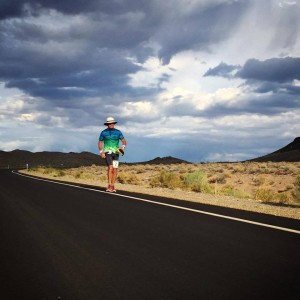 I put on a wide brimmed hat and the crew laid a wet towel over that and one around my shoulders then pinned them in front like a Mary Poppins bonnet. I wore an ice bandana, a bag of ice under my hat and one down the front of my shorts over the femeral artery to cool blood. I also stuck some ice cubes on my wrist veins under my arm sleeves. I felt ok and almost ran the entire way to Panamint Springs before the next big grinding climb up Father Crowley. I had a decent climb up to Vista Point but my stomach would not stop revolting making my existence very uncomfortable, but I managed to pass a number of runners going up and passed even more on the climb to Darwin.
I put on a wide brimmed hat and the crew laid a wet towel over that and one around my shoulders then pinned them in front like a Mary Poppins bonnet. I wore an ice bandana, a bag of ice under my hat and one down the front of my shorts over the femeral artery to cool blood. I also stuck some ice cubes on my wrist veins under my arm sleeves. I felt ok and almost ran the entire way to Panamint Springs before the next big grinding climb up Father Crowley. I had a decent climb up to Vista Point but my stomach would not stop revolting making my existence very uncomfortable, but I managed to pass a number of runners going up and passed even more on the climb to Darwin.
I was making progress but it was costly and I didn’t really feel like being there; at one point two F14 fighter jets screamed over me contour flying over the desert and I was so thrilled I yelled and fist pumped the sky. on the thirty long meandering miles to Lone Pine I ran as much as I could, ignoring the pain of some very sore blistered toes and souls as we picked off more runners as their flashing red lights appeared ahead. It was a relief to make the turn onto the Portal road and start that tough 13 million to the finish. I ran the first mile then put on my Teva sandals to give my toes some relief. At one point I sat on the rear bumper to rest my weary body and noticed the flashing lights of a crew vehicle just down the road…it scared me so much that i might get passed that I put my head down and power hiked as hard as possible up to the switchbacks then didn’t stop until I crossed the finish line in 30:02…broken but relieved to have kept going to the end when all seemed lost.
I had come from virtually last place to 9th overall, proving once again that you have to be a stubborn eastward to get involved in such pursuits.
The lesson I learned in the last 30 hours is this:
You may not get the day that you want, but it’s what you do with the day you get that determines if you have a strong enough will to determine the outcome.
A heartfelt thank you to my stellar crew who cared for me like their wayward child on a bender…world class endurance athlete Lisa Smith-Batchen, intensive care and survey nurse, Marie Boyd, who is also a fellow Aussie and holds many age group running records…and the incomparableWill Glover, a Badwater 135 finisher and a steady hand during a frenetic race…
It’s been 12 hours since I finished and I still can’t sleep…I have really used and abused my body on this one…
Congrats to all the runners, crew and race staff in amongst all the carnage and debris of runners left out in the desert are many memories now etched on us all.
Lisa Smith-Batchen’s post on Grant’s race:
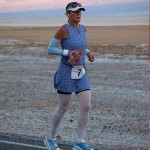 Grant Maughan blew off the start chasing Harvey Lewis like it was a 10k race. We tried to get Grant to slow down but it was like telling Sea Biscuit the race horse to slow down!!!
Grant Maughan blew off the start chasing Harvey Lewis like it was a 10k race. We tried to get Grant to slow down but it was like telling Sea Biscuit the race horse to slow down!!!
Grant wanted to go for it and he did, but the 11 pm start was a different challenge on his digestive system.
By mile 20 Grant was forced to walk darn close to 40 miles as his stomach distress was just awful, and this was a first for Grant.
We had him lie down at the top of T Pass and sleep a while to calm his stomach down. Once he started going again, he was running down hill 7 minute-mile pace! Our Aussie was making a come back!
During the race, Grant never felt great, but what we saw was amazing iron will, fortitude and guts!!
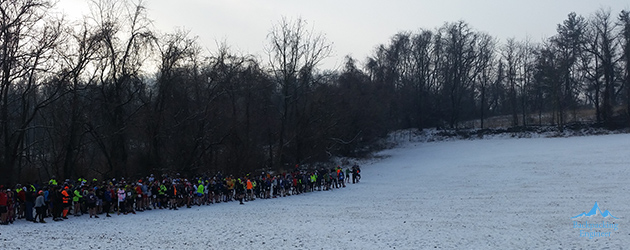
Russ Dresher escaped the New England snow (sort of), ran on some pristine single-track (kind of), fell into a relaxed, effortless pace (somewhat) and woke up the next morning feeling like a million bucks (not quite).
By Rush Dresher
If you are an avid Backpacking Engineer follower with a keen eye for detail you may have noticed the frequency of new blog posts have dropped over the past several weeks. You may also remember some random sentences thrown into recent blogs about some little side project I have been working on. Training for my first 100 mile ultramarathon. What’s that? You see the connection between the two? Bingo! This running stuff sure takes up a lot of time! In the coming weeks I plan to add some training updates to the blog, but for now here is a race report for my first ultra of the year.
The snow and cold has been relentless in New England this year. The backyard on the first day of Spring still has up to 2 feet of snow in some spots. Trail running has been tough this season with many hours spent running on narrow roads occupied by vehicles with pissed off drivers inside because some idiot is making the road even narrower. Looking to get in some foot-to-dirt contact time I set my sights on the HAT 50k in Havre de Grace, Maryland, somewhere between Baltimore and Philadelphia, home to Susquehanna State Park.
Friday March 20, 2015 – Day before Race
Havre de Grace, Maryland receives a late season snowstorm. The trail becomes blanketed with about an inch of snow. Further north, Falling Angel gets behind the wheel of our race mobile and begins the drive from Hell. Leaving at rush hour is never a good choice in New England. First up was the traffic jam in Hartford. Sitting in traffic, the snow from the south begins to make its appearance in the north. Roads become covered, accidents ensue and more traffic snarls are encountered. Night falls before even making it out of Connecticut making visibility even worse. New York proved to be even worse. Somewhere in New Jersey the snow turned to rain and tensions were relieved (both between us and the road and between Falling Angel and I). Well after midnight I finally get to grab some shut eye. Thanks love for supporting my crazy “hobby” and showing the drive from Hell whose boss!
Saturday March 21, 2015 – Race Day
I awoke after only a few hours of sleep to tight legs due to using the passenger side brake so much the day before. Despite being tired and tight I was excited to feel the soft dirt underneath my trail runners. Arriving at the course, the realization of dirt quickly faded as I sighted a remaining blanket of snow. On the bright side it wasn’t 2 feet!
I did the usual registration stuff and was completely confused when I was handed a cooler style bag. I never actually got anything before in past ultras. Shortly after I was standing in a snow covered field with close to 400 other runners awaiting the long anticipated word, “GO!”
At the shout of that word we were off running through the field following 2 merry men in Robin Hood style hats as they led us on a 1.4 mile out and back to spread out the herd. My plan was to keep those merry men in sight in order to position myself in the front of the pack and reduce my chances of getting stuck in a conga line later on. The plan worked as I never found myself in a conga line for the remainder of the race despite so many runners.
After passing through the start/finish area for the first time I began a 2.2 mile loop through a mix of fields and woods. Snow covering the trail and the conga line behind me I settled into my training pace of 5 mph. The short loop was over before I knew it and I was even slightly ahead schedule.
Passing through the start/finish area for the second time Falling Angel was waiting for me with encouraging words of:
“There you are! I was getting worried about you! You are behind schedule!”
I ran past listening to heckles from nearby runners such as, “How’s that for motivation!” and “Is she going to make you walk home to?” Meanwhile I’m trying to make sense of it all since I knew I was averaging about 6 mph at that point. Oh well, the race must continue. I was a little bit disappointed to see that the start/finish aid station did not have any food out yet so I sucked down a gel and moved on.
Next up was the first of two ~13.7 mile loops. A short field section followed by wooded single-track, I was loving the snow covered course. In fact I even said to myself, “I can’t believe my feet are still dry.” Then it hit. A knee deep stream crossing 4.1 miles into the race. From here on out my feet would be wet the rest of the day. After more rolling single-track I was at Picnic Area Aid Station #1 grabbing some PB&J squares and sour patch kids. I love sour patch kids when running!
Continuing the loop I noticed the snow was beginning to melt and the trail was becoming a nonstop mud pit. Good thing I enjoy running in mud. The rest of the day proved to be one muddy orgasm of delight as I slipped and slid every which way getting a good hip workout. Between Picnic Area Aid Station #1 and #2 the trail is a mix of woods and road. For road lovers, this is your chance to make up time. For me, it was a perfect time to settle into an effortlessly slow pace and check out the form of other runners.
Stopping at Picnic Area Aid Station #2 I would see FA for the last time as she was headed off to her cousin’s bridal shower an hour or so away. We said our goodbyes as I was stuffing myself with the best French fries ever. Period! I might come back to this race again just for the fries!
5.3 miles of rolling single-track, woods, fields and roads and I was back at the start/finish line for the third time. During those 5.3 miles I assessed what I needed from my drop bag, my pace, my health and my attack plan for the second and final loop since I now knew what to expect.
At my drop bag I put on new Darn Tough socks, slipped out of my C-lites and into my Helios. I knew everything would be wet again in just 0.7 miles, but what the heck I brought the gear so I might as well use it! Despite being Spring in Maryland I got chilled to the bone while stopped there. I was so glad to get moving again. I felt like I was backpacking in the shoulder season. In fact, my hands never really warmed up until the race was just about over.
The final 13.7 miles were enjoyable. I maintained my 5 mph training pace, had fun playing in the ever increasing mud pits and conversed with fellow runners as I picked off a handful here and there. The last 5.3 miles of the race I summarized my thoughts. Here they are.
The course was absolutely fantastic. The mud for me was fun, but I bet the race would be just as fun without it. The course is 100% runnable. There are no steep or long climbs which is a blessing and a curse depending on your self-pacing abilities. I did not find any part of the trail technical in fashion, but as everyone knows the notion of technical is very subjective. I’m not sure how you would ever keep your feet dry on this course. At the very least, there are 2 calf-to-knee deep stream crossings. My suggestion? Run right through those suckers without hesitation. It is much more fun that way. There was a little bit more road than I prefer but at least the traffic was minimal and the scenery was nice. The volunteers were great and the aid stations were well-stocked. A few minor comments about aid stations. Don’t expect food at the start/finish aid station the first time through. There was supposed to be an unmanned aid station somewhere after Picnic Area Aid Station #2. I never saw it. Not all aid stations are created equal. Picnic Area Aid Station #1 did not have any hot food to offer.
Crossing the finish line in 6:00:45 after 30.48 miles and 2,971 ft of gain with equal loss I was handed a hat and umbrella and pointed towards the food. This was good enough for 76th place out of 402 runners which is way better than I was expecting. One final thought. I would definitely sign up for this race again and the registration fee of $65 was well worth it.
Sunday March 22, 2015
I’m writing this blog as Falling Angel drives my butt home. Thanks again dear! My body is feeling pretty good but I do have some sore quads today probably because of all the self-braking going on in the mud. Today is active recovery day for me which is good because I am getting stiff sitting in the race mobile. Overall though I think I am on track to knock out a 40 mile race next weekend, but I will let my body and time decide that over the next few days.
Thanks again to all the volunteers for hosting such an awesome event. And thank you Falling Angel, my wife, love and ride bride (in more ways than one).
]]>
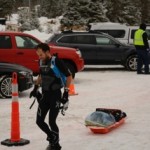

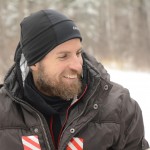
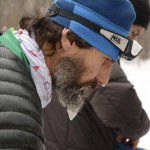
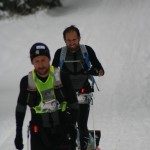
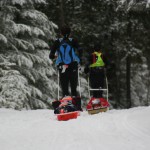
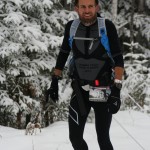
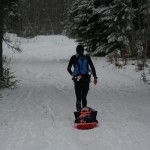
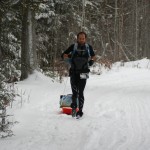
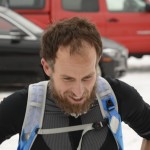
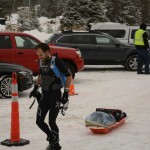
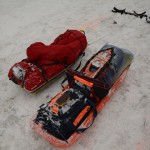
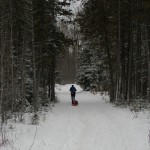

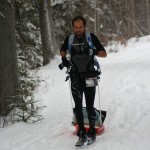
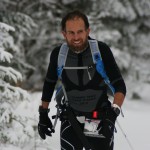
Beware of the Yeti
The Arrowhead 135 – Legend of the Northwoods
By Harvey Lewis
There is a legend and mystique to the Arrowhead 135. In the far northern stretches of Minnesota, just below the Canadian border, athletes have descended annually in the dead of winter upon International Falls, otherwise known as “Frostbite Falls”, for a race that will challenge even the most seasoned ultrarunner.
This past July I won the Badwater 135, listed by National Geographic as first on the list of the top ten toughest races on the planet. I have raced Badwater the past four years, drawn to it due to the extremes in temperature (Death Valley reached 134 degrees in 1913). The challenge of running 135 miles over three large mountains in one of the most picturesque places on the planet was also a tremendous draw. After winning Badwater, I wanted a new challenge – one that would require a new set of skills and would push me.
The Arrowhead 135 is the antithesis of Badwater. The Arrowhead Range is known for having some of the coldest winter temperatures on the planet (Tower, Minn., where the race finishes, holds the Minnesota record of -60 degrees in 1996). It’s incredible to imagine that air temperatures have ranged as much as 190 degrees between these two distinct lands – and that’s not taking into account the potential for wind chill or the super-heated blacktop in Death Valley that generates temperatures hot enough to melt shoe soles. I would be lying if I said the extreme cold didn’t leave me a bit on edge throughout the period of preparation. Additionally, unlike Badwater, where athletes have a crew to refuel them, the Arrowhead requires athletes to receive no outside assistance whatsoever. Athletes must carry all of their own materials, outside of what they might purchase at the one store (mile 36, Gateway Store, aid station one) and a 15-pound drop bag (mile 70, MelGeorge’s Resort). The final aid station is at mile 110, referred to as Ski Polk, that is expected to carry only water. There are three aid stations for the 135 miles to Fortune Bay Casino. Athletes have 60 hours to complete the race.
The Arrowhead 135 required a lot of research and gear. I read through many of the blogs and articles on the race website. I remember seeing the Arrowhead 135 advertised on the site as among the top 50 most difficult races. Parker Rios, a race veteran, was extremely helpful in giving me feedback on equipment and any questions related to the race. Parker, like many racers, dropped out his first year. He went on to win in 2013, an extremely demanding year with more than 10 inches of snow. I knew I had to exercise caution or I risked a DNF as well. Over the years, fewer than half of the racers have finished and the weather conditions can change substantially year to year. The Arrowhead is not cheap. The mandatory gear list and demands of the course required a -20 sleeping bag, sled with harness, and extreme weather apparel.
I love the heat…I don’t love the cold! I enjoy snow and winter scenery, but for decades I have internally bantered about the cold. I had to change my psychology. Typically, every winter I sign up for the local gym and watch movies three or four days a week while running on a treadmill to supplement my miles outside. This winter, I very rarely ran inside. I conditioned my mind to enjoy the cold. Once a week, I would run with less clothing than the weather demanded for a short set. I also took some cold showers and developed a cold weather mantra, telling myself, “I love the winter. I’m an arctic fox.” The strategy seemed to work; I became more immune to the cold. I really enjoyed running back and forth to work each day in it.
The challenge in my hometown of Cincinnati, Ohio this winter prior to the Arrowhead on January 26th was that we had only one small snowfall in November. I didn’t get to practice with my sled once. But it helped speaking with Parker Rios and trying to understand the best formula. I pulled a tire some, as I had in past years training for Badwater. I ran along the rocky shoreline of the Ohio River, which simulated the extra effort of running in snow and, at times, uneven stride. My final piece of training was pacing the Disney Marathon in Orlando, Fla., with our Clifbar pace team three weeks out. I really enjoyed seeing the park employees in full winter facemasks directing runners the morning of the race. Temperatures were in the 50s, but it looked as though some employees were prepared for a trip to Saskatoon, Saskatchewan. Stirring around the park, I ran into the Yeti and decided that he would accompany me at least in spirit to the winter wonderland of Northern Minnesota.
Race week came. Snow had come to the east coast, and perhaps the Yeti had a part in preventing my plane from ever landing in Cincinnati. Tracey Outlaw, a friend who came to check out the race, and I had to drive to Indianapolis to catch the last flight that would get us to the Twin Cities in time to catch the regional flight to International Falls. We caught a ride with his parents, who were heading to St. Louis. I hastily organized my belongings for the flight, and we rushed off. We had limited time and gas, but managed to make it just in time. On the flight from the Twin Cities to Hibbing and then onward to International Falls, I bumped into about a dozen racers – including my good friend Carlos Sa and his buddy Joao, who had just arrived from Portugal. After landing in International Falls, it became apparent that my sled was missing. The airline staff felt terrible, but it looked as though the sled would arrive by the next night (ahead of the 7am race start). I felt relaxed, and just chalked it up to the Yeti playing games with me. I would find a solution.
The town of International Falls is quiet, but there is a unique winter culture. I enjoyed spending time in town talking with the locals, including Race Director Ken Krueger. I asked Ken why he listed the Arrowhead as one of the top 50 most challenging races on the planet, and he referred to a nice book on adventure races on the table next to him that had the Arrowhead listed. I met other race volunteers. The guys with the gear check could have served as drill sergeants in another life; but they made me laugh, and I could understand only after racing the vital nature of each piece of gear. I had brought small blinking lights from Badwater that would be virtually invisible on a snowmobile trail with all of the snow and the snowmobiles zooming along at 50 miles per hour. So we had to scramble to get new lights. Fortunately, another racer gave me one, and a volunteer another.
The sled arrived at 10:30pm. While I wasn’t allowed any assistance during the race, my father, his friend Ernie, as well as my two friends Tracey and Andy Lohn came for the extended weekend adventure. My father and Andy helped to assemble the sled to my poles that would connect to my harness as I packed my food. We turned out the lights around midnight. I saw an extra carabineer dangling on the front of the sled. I said, “What’s that for?” My father said, “That’s in case something breaks and you need to use it.” We went back and forth a couple times; I really didn’t want any extra weight…my sled already weighed over 40 pounds. Still, I left it there, feeling the gravity of the days organizing and ready to hit the sack.
I awoke the next morning to a new snowfall of a couple inches. We made our way the half-mile to the start from our 50’s-era motel, one of many that line the strip to the border. Excitement filled the air; but there was an unusual warming effect, with temperatures expected to reach higher than usual. It was ironic that the temperature in my hometown of Cincinnati, Ohio was actually expected to be cooler than International Falls over the period of the race. This gave me a smile. I got to the start and quickly attached my sled. While I trained very hard and seriously for the event, the next five minutes would be the first time I practiced with the sled. I ran a couple 30-meter jots around the parking area, and the gear seemed comfortable enough. I debated starting with fewer layers and feeling cooler at the start, because I was concerned about sweating and becoming chilled later. My father said I should aim to be comfortable. I didn’t have to think very long about it and agreed.
I heard the final calling out for the fat tire bike start. Lights were blinking everywhere in the darkness. It looked like a hundred patrol cars with blinking lights. You could see the anxiety and anxiousness in the faces of the other racers. I felt some myself; 135 miles is quite a distance, especially pulling a 40-pound sled in mushy snow.
The cyclists and skiers were off. Four minutes later, the call was made and the runners dispersed into the darkness. It was fun being assembled as a mass; there was a great degree of energy and movement at the start of the race. Still, I tapered my ambition. I knew the pace for the record, and after 40 minutes into the race I knew we were all well ahead of it. I settled into a comfortable stride with my Newton BOCA AT trail shoes and tried to relax. By an hour into the race, I had stripped down to just a single layer of 2XU compression clothing. I took my hat and gloves off. I felt comfortable in the cool of Minnesota.
Grant, the Aussie who finished 2nd the past two years at Badwater, along with another runner who I would later learn was Jan Kriska, disappeared far into the distance. They were probably nearly a mile ahead after an hour and a half. In preparation for Arrowhead, I had visited Mr. Miyagi (aka Andy Shetterly) – a local legend in massage. Andy always found a way of injecting strong advice. The week of the race, I believe he almost purposefully put me in the path of one of his patients, a Vietnam veteran named Tim. Tim wore a hat that resembled Indiana Jones and told me of his adventures to the Hudson Bay. It was apparent he’d had adversity in life, though we didn’t discuss it; he was in a mechanized chair. But he didn’t seem phased in the least. When I asked if he had any thoughts on the race it, all led back to one word: “Discipline.” I thought of that word as I maintained the pace into seventh place, a small dot along the vast wilderness of pristine pine trees and the narrow snowmobile channel that parted it.
Not long after the first of daylight, I saw a turn-off to the right with markers. I was confused for a moment; the three or four runners within eyesight were going straight. The thought of taking a wrong turn made me cautious. A runner was perhaps 100 or 200 meters back, and I slowed for him to catch me so I could compare thoughts on the turn. It turned out to be a Swede, Marcus Berggren, calmly making treks. He agreed the marking was odd, but had a nice GPS unit with a map; he calmly asserted we were heading in the right direction. I had gotten lost on a 50-miler in December with a large field of runners in an area that wasn’t remote. Getting lost really was tough, especially mentally, plus having to cover more distance. This was in the back of my mind. Marcus and I talked a little; he said he was disappointed about the weather, that he had expected much colder temperatures. I mentioned the amazing scenery in the moment and noted that the course would still offer some good challenges.
Soon after, I felt something snap on my harness and the weight of the sled pull to the right. I looked down and saw that a piece was missing; my pole was no longer attached to my sled. The Swede passed me that moment, with a sleek sled that looked considerably lighter. The part that had fallen off my harness was nowhere to be found in the fresh layer of snow. Fortunately, my father had insisted I take the extra carabineer. I had to laugh at myself that he was right; but it also concerned me that I had made it not two hours and the Yeti seemed to have taken a poke at my sled. Keeping the sled intact and finishing was of utmost importance, and it worried me for a minute. Still, I tried to get focused again on the trail ahead. The Swede had put 400 meters on me in the time I fumbled around with my sled, and I didn’t want to waste any more time.
After another hour or so of keeping a moderate pace and trying to keep the next runners within sight, the flora began to change. The pines were stunning. We took a left turn and entered an area where not a single tree was taller than myself. I loved the trees’ stunted appearance. As far as the eye could see, all that was visible were these skinny, short pine trees that seemed perfect for the landscape of a blockbuster film. Spaniard Jorge Rufat-Latre caught up to me then, and we were in awe of our surroundings. We laughed and chatted. I told him I thought the others were out too fast and that we were still on record pace. Jorge impressed me with his strength. We were both vying for eighth place, but I thought he would back the engines down. He seemed surprised to be amongst the leaders and comfortable to merely finish the race. Still, what he said and what he was doing seemed entirely different. He appeared determined, and I was happy to have him nearby – especially with my concern of getting off-course.
I also caught up to my friend Carlos Sa, from Portugal. It was impressive that he had just flown in from Portugal the day prior. I was concerned because his friend Joao, also from Portugal, was on skis and looked to be having a lot of difficulty at the start of the race. The fewest number of athletes have succeeded with skiing the race; not many more than a dozen men, and only one female. Carlos is an amazing endurance athlete, but I could tell that he was having a tough time. His sled seemed to be sinking into the fresh snow more than others, and it was adding more poundage to pull.
We spread out before arriving at the first aid station. A cyclist was coming toward me from the trail to the right and I saw a runner ahead to the left. I yelled toward the runner, asking about the directions; it turned out to be the Swede. He was friendly enough to point in the direction to the right. As I finally neared the store, Jan, the other runner with a shaggy beard like mine, passed me going the other direction. We gave each other a competitive look, indicating that it was on.
I entered the store and grabbed as many calories as possible: electrolyte drinks, soda, some more chips and an egg salad sandwich. I saw Grant and asked him if he was ready. He replied with a solid Aussie accent and his normal spunky demeanor, “I’m always ready!” I knew Grant from Badwater, and I was hoping he and Carlos would join me for the next segment. Given my lack of knowledge of the course and the new element of the cold, I felt we would do better running together. But I was ready and they were still working on organizing, so I continued on. As I departed, I thought about the scene inside the store. It looked a bit like the fallout from a battle. The runners and some of the cyclists were working to recuperate and looked exhausted. While I was allowed no outside assistance, my father and friends were at the station along with a couple dozen onlookers to give some cheers as I raced out. I moved into third place.
Jorge was doing extremely well in the race. He managed to catch up with me, and again, I was impressed by his persistence. I was assured at this point that it was going to be no easy race; I had to dedicate every fiber of my focus and energy. Carlos Sa also caught back up to the group. For hours, we rotated back and forth as darkness permeated the depths of the forest. I was holding a consistent speed and felt we were gaining on the leaders. Finally, I saw the next racer’s light ahead. We had passed a number of cyclists by this point as well. It was particularly difficult for them to climb the hills, although they floated down them.
Once Jan saw us, the race was on. We staggered up hills that surpassed my expectations across the full second half of the course. We battled for hours pushing ourselves to utter exhaustion. Jan had looked wiped out when I initially caught up to him, but he was tough; he wasn’t giving up. We shifted positions between second and third more times than I could count throughout the night. One of my favorite stretches was across a sizable frozen lake before MelGeorge. Jan had a lead on me, and I really put on the speed to catch him right before the second aid station. When I arrived, I learned the Swede had just left eight minutes earlier. The lodge was a welcoming oasis, but I felt I had no time to rest if I was to make a go for catching the Swede. After only a couple minutes, I left in second place, and it looked as though Jan was going to take his time resting.
Leaving the small glimpse of civilization, the area felt isolated and a million miles from Cincinnati. I tried to calm my breathing, maintain stride and focus on the Swede ahead. Still, my energy was waning, and I felt tired. Bright lights from my body illuminated the darkness, but at times, the forest was eerie. As I glanced over my shoulder, I saw a runner: Jan had caught up to me. Again, we were emblazoned in a game of cat and mouse…but after a couple of hours of warring with each other, we finally relented. I believe we both had the same idea at the same time to call a truce; we thought it would be better to work together than to out-mouse each other. It became extremely helpful over the final 50 miles – I became severely sleep-fatigued in the middle of the night, and having Jan’s blinking light ahead really helped me fight the urge to pull over and dive into the comforts of my -20 sleeping bag. I proved to be useful to Jan as well, when his light went out. It was amazing how dark it was, and how difficult to replace the batteries in the cold of the night. Having my light was vital. We got into a rhythm of teamwork, alternating as leaders. The most valued lesson of the race was watching Jan sled down the hill. He flew! I had no idea that the sled-riding could be such a key part of the race. I have always been a fast downhill runner, and I ran down all the hills. It was too difficult to detach and ride down the hill with all my gear without breaking the poles connecting my sled to harness. In hindsight, sledding downhill is the most fun aspect of the race and the key ingredient for any chance of breaking the new record set by Swede Marcus by nearly three hours. Jan and I continued our forward progress, but slowed considerably.
The darkness of the second night enveloped us. With eight miles to go, I turned and saw a light from another athlete flickering in the distance behind us. I thought it was another cyclist, and it seemed they were catching us quickly. Jan and I were beat; but when the athlete got about 100 meters from us, I knew for certain it was a runner. I told Jan, “We need to go now, like never before!” We ran as if we had seen the Yeti in the flesh. Our adrenaline fired, and we ran sub nine-minute miles. It may not seem like much, but after more than 37 hours running in the soft snow, we were going all-out. To the Minnesota racer who nearly caught us, it appeared as if we were dancing, our lights shaking as we darted ahead. We couldn’t tell how far back the next runner was, but we continued at an all-out pace and shouted positive encouragements to each other. When I looked back again, all I saw was blackness.
We never really knew how far back the next racer was. When we saw the lights of the Fortune Bay Casino, we weren’t sure we had actually arrived. Perhaps one might think the finish anti-climactic – but Jan and I were elated. After all, we had experienced running half of the race together, and we were determined to cross the finish line together. We sprinted across the finish line holding our arms up together in victory, and tied for 2nd in 38:45. The Fortune Bay Casino was pure paradise. It felt like winning a hundred million dollars to get into a warm bath with mineral salts in a comfortable suite with unlimited food and drinks.
The next morning I talked to Pam Reed, who has raced Badwater 10 times and won Badwater outright, racing Dean Karnazes back in his heyday. She said Arrowhead was the toughest race she had ever experienced. For me, Arrowhead was really tough to prepare for and adapt to; it’s significantly longer than any hundred-mile race like Western States, and even the 135 miles of Badwater because it’s along a snow-covered snowmobile trail, pulling a sled. Still, I think the toughness of races at times has to do with the runner’s ability to adapt to different conditions. For a racer who prefers cold or heat, the opposite extreme can be the toughest race in the world. I saw the race director the next day, and suggested that perhaps his race was tougher than the top 50 in the world. But I plan to return.
]]>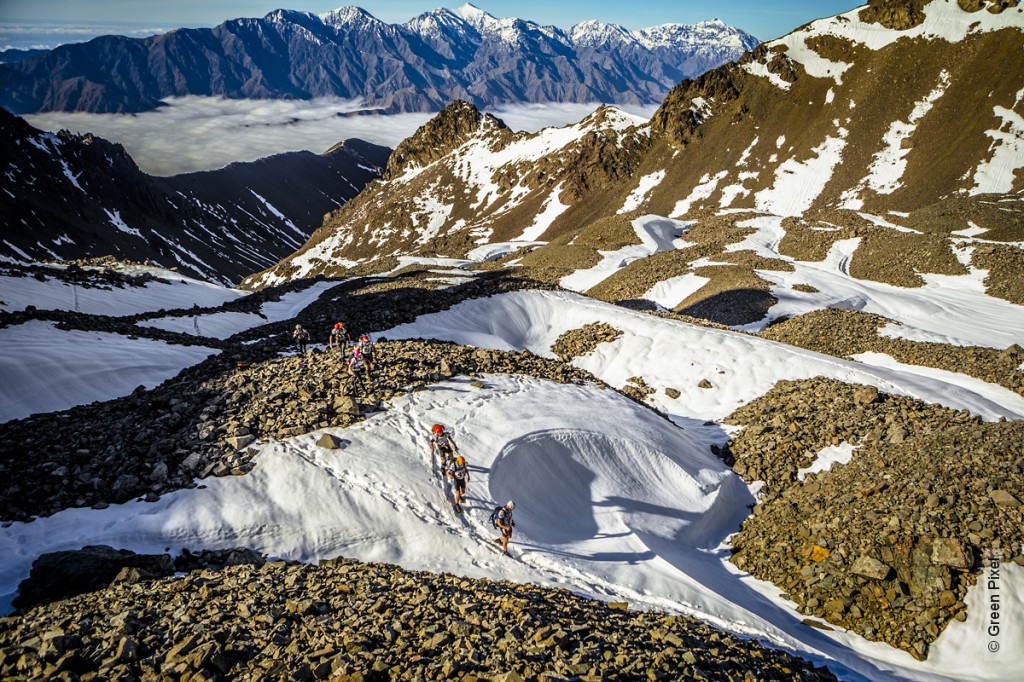 GODZONE ANNOUNCES LEADING NZ CHARITY CURE KIDS AS RECIPIENT
GODZONE ANNOUNCES LEADING NZ CHARITY CURE KIDS AS RECIPIENT
GODZone as announced in December 2014 that leading New Zealand child health research funder, Cure Kids, has been named as the recipient charity for the adventure-racing event taking place in Wanaka in March 2015.
Race Director Warren Bates says GODZone is proud to be associated with Cure Kids, who fund vital child health research in New Zealand.
“ GODZone is now in its fourth year of operation and we have been considering for some time how we can use our international platform for the greater good. By choosing Cure Kids as our official charity recipient we aim to help raise funds and awareness of the vital –child health research they fund each year.”
Over 200 adventure racers are competing in the event next year, including reigning world champs Team Seagate from New Zealand, and Mr Bates says there will be plenty of opportunities for teams to help the cause.
“The competitors certainly face some tough challenges out in the wilderness and around the non stop course. However, this is nothing compared to the challenges some children and their families face on a day-to-day basis. Our alignments with Cure Kids is something that hopefully will inspire our adventure racing community to rally behind and help to raise funds for this important research. We will be actively encouraging teams and their supporters before the event and during via our live website to donate.”
Cure Kids CEO Vicki Lee is hugely supportive of the partnership and says being the recipient charity of GODZone is “simply sensational”.
“It?s always humbling when people are prepared to put their body on the line and stretch their limits both physically and mentally to raise money for Cure Kids.”
“Our own Kiwi kids will be the ultimate recipients of their hard work, as the dollars raised in the GODZone race will be directed to improving the health of New Zealand children. A cure in New Zealand is a cure world-wide” says Ms. Lee
Cure Kids funds research into cures and better treatments for a wide range of childhood illnesses. These include cot death (SUDI), stillbirth, leukaemia, rheumatic heart disease, asthma, inherited heart conditions and mental health conditions.
The GODZone event can be followed through out via the godzoneadventure.com website where each team is tracked by a locator beacon. Race Director Warren Bates says it promises to be one of the most compelling events to watch both for the winning teams but also to see how much money will be raised for Cure Kids.
“We really want people to get behind Cure Kids and all the teams as they tackle this massive challenge. Today we launch our Cure Kids landing page www.godzoneadventure.com where people can find out more about the campaign and how
they can get involved.”
For more information on Cure Kids go to http://www.curekids.co.nz/GODZone or go to http://www.godzoneadventure.com or the Facebook page http://www.facebook.com/godzoneadventure
For more information please contact:
Media Liaison
Margo Berryman
Ph: 021 246 3342
[email protected]
http://www.godzoneadventure.com
]]>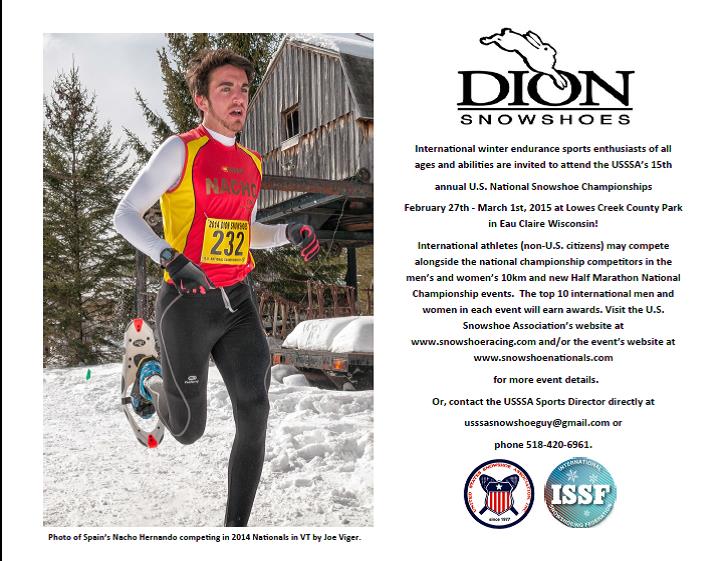
The United States Snow Shoe Association is featuring 5 signature races this year. Visit www.snowshoeracing.com or www.snowshoenationals.com to learn more.
]]>
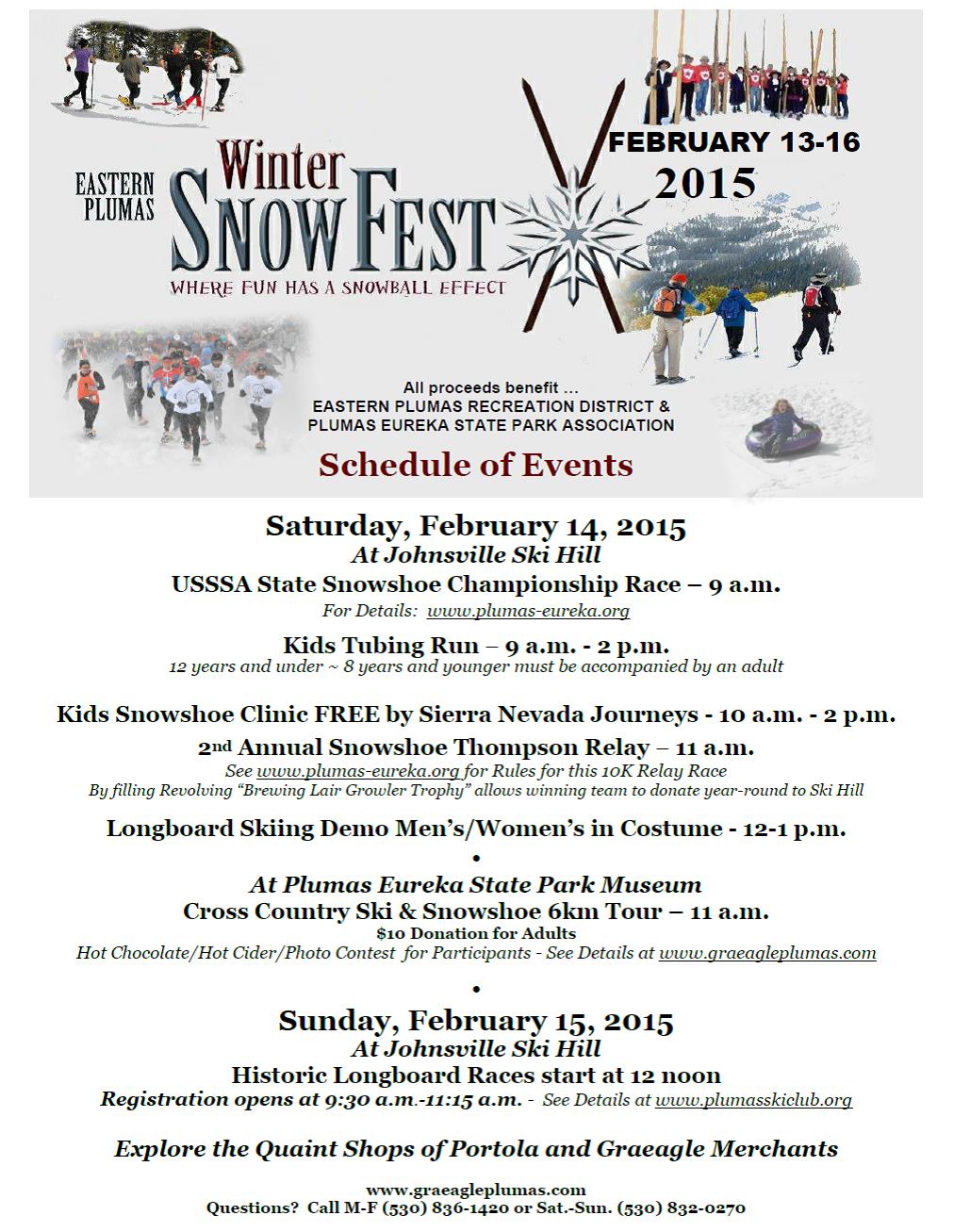 ]]>
]]>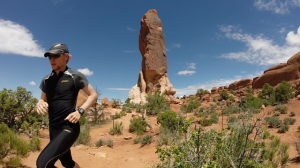 Documentary on 500 miles in 47 days in 26 national parks for 20 amazing minutes on trail running.
Documentary on 500 miles in 47 days in 26 national parks for 20 amazing minutes on trail running.
This 20-minute short documentary offers a total immersion from the double crossing of the Grand Canyon to the volcanic areas of Yellowstone stepping by the lunar landscapes of Arches. Between the bears in Sequoia, the snowed trails of Pikes Peak and below sea level at Bad Water in the heart of Death Valley, this video presents trail running from every angle.
Independently made and crowd-funded, this documentary project already received a warm welcome from the running magazines in the US, Canada and France, but also from professional trail runners.
This project is built around the videographer’s sharing his passion of running. This documentary was released on Tuesday 4th November 2014.
To learn more, contact:
Guillaume Arthus
Passionate trail runner
[email protected]
GODZone Race Director Warren Bates (bottom left holding unit) demonstrates to racers how the YB Tracking Unit works.
New Zealand’s premier expedition adventure race is delighted to announce a partnership with leading industry technology company, YB Tracking, who will provide live website tracking of teams racing in the 2015 GODZone event in Wanaka next March.
GODZone has been at the forefront of technological developments for live tracking that allows adventure-racing teams to be constantly monitored via a GPS locator beacon system. Race Director Warren Bates says a strong relationship has been developed with specialist tracking company, YB Tracking, and the new partnership brings significant benefits to the event.
“ We have used their devices exclusively in each GODZone chapter and now we are utilising the YB3 unit for all our pre-event reconnaissance work in the field and as our emergency device of choice.
The importance of bomb-proof live tracking from a safety and media perspective cannot be overestimated and without doubt the units developed by YB are the most technologically advanced available.”
The system provides vital safety back up with the ability to send emergency signals if required and also offers compelling viewing for tens of thousands of online viewers who can keep abreast of each teams progress as the adventure race unfolds over seven days.
Designed for the harsh realities of adventure racing the tracking units carried by each team are waterproof, reliable, and compact. Mr Bates says in challenging situations such as dense tree cover, ravines, and tough terrain, they will outperform all other competing products.
“ Over the past few years we’ve taken adventure racing forward with our innovative live coverage platform. Having YB as a partner is a truly exciting prospect as it will allow us to push ahead with new developments, helping us to showcase this amazing sport to the ever-growing online audience.”
Nick Farrell from YB Tracking says the company’s commitment to adventure racing has grown significantly through their relationship with GODZone.
“ GODZone, in our opinion, is one of the toughest, demanding races there is, and our YB3 trackers have to be able to cope with everything the competitors go through. Having helped with several rescues over the years, and provided the public with a means to track these athletes on the course, we’re proud to support GODZone and look forward to doing so for many more years to come. ”
Photo Caption: GODZone Race Director Warren Bates (bottom left holding unit) demonstrates to racers how the YB Tracking Unit works.
For more information on YB Tracking go to Http://www.ybtracking.com For GODZone team entries go to http://www.godzoneadventure.
For more information please contact:
Media Liaison
Margo Berryman
Ph: 021 246 3342
[email protected]
http://www.godzoneadventure.
